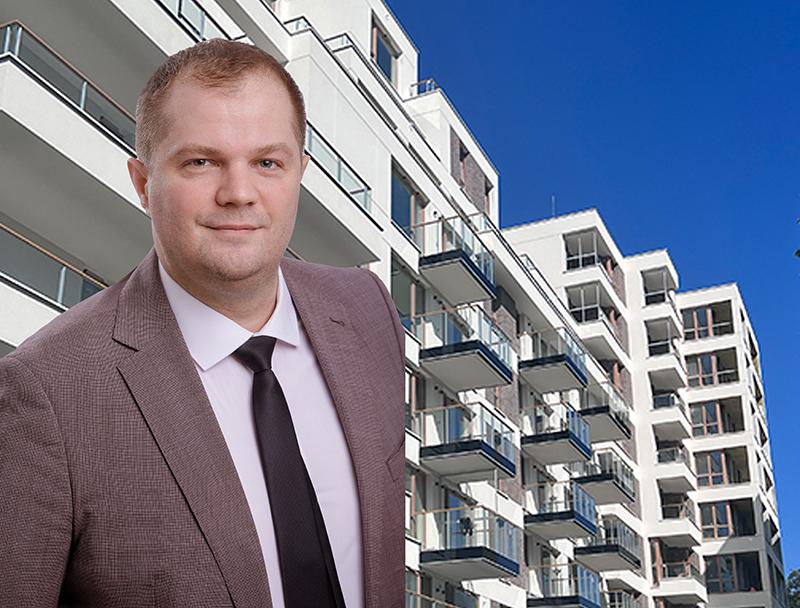Romania’s Housing Market Faces Segmentation, Supply Pressures, and Mortgage Constraints in H2 2025
Romania’s residential real estate market continues to show resilience despite affordability challenges and uneven supply. In a Q&A with CIJ EUROPE, Dan Voiculescu, Broker/Owner at RE/MAX Innovaton, shared his perspective on pricing trends, demand segmentation, and the forces shaping the outlook for the remainder of 2025.
Voiculescu expects moderate price growth in the country’s major urban centres, though not evenly distributed. Citing August 2025 data from Imobiliare.ro, he notes that average asking prices reached approximately €2,630 per square metre in Bucharest, €3,260 in Cluj, €1,640 in Timișoara and €1,550 in Iași. Year-on-year, that translates into increases of 6 percent in Bucharest, 3 percent in Cluj, 5 percent in Timișoara and 4 percent in Iași. “For the second half of the year, I see Bucharest and Timișoara continuing with three to five percent nominal growth, Cluj remaining flat to slightly positive, and Iași advancing by two to four percent,” he explains. Inflation, which still stands at 5.6 percent according to the national statistics office, remains a key driver, while the National Bank of Romania’s decision to hold its key policy rate at 6.75 percent means affordability will remain under pressure.
Demand patterns are shifting as well. “First-time buyers are clearly the most affected by financing conditions,” Voiculescu observes. “The high down payment requirements and elevated instalments limit access to mortgages.” He points to ANCPI’s August data showing around 4,500 transactions in Bucharest, up 15 percent from last year, but emphasises that growth is concentrated among mid- and upper-market buyers. In contrast, investors are making a cautious return, particularly in Iași and Timișoara, where gross rental yields of 6 to 6.5 percent are more attractive than the 4 to 4.5 percent available in Bucharest and Cluj. “Investors often come with liquidity, so they are less exposed to lending costs,” he adds. End-users, especially families upgrading their homes, remain the most stable group, supporting transactions in the €120,000 to €180,000 bracket in Bucharest and Cluj.
The mortgage market continues to exert a strong influence. According to Voiculescu, average annual interest rates on 30-year fixed loans remain between 7.5 and 8.2 percent, keeping borrowing costs high. “Banks are still very cautious, with strict eligibility criteria, and household incomes, even growing at about ten percent annually, are not keeping up with rising housing costs,” he says. He believes that a modest cut in the central bank’s policy rate later this year could improve affordability slightly, but cautions against expecting a strong rebound. “What we may see is a slow stabilization of mortgage-driven demand, not a spectacular recovery.”
Supply constraints remain an issue. ANCPI reported about 52,000 residential building permits nationwide in the first eight months of 2025, eight percent fewer than in the same period last year. “Permitting in Bucharest and Ilfov can still take up to two years, and developers are facing higher costs for materials such as steel and concrete, as well as labour shortages, particularly in Cluj and Bucharest,” Voiculescu explains. He estimates that actual deliveries in 2025 will be between 65,000 and 70,000 units nationwide, falling short of demand, which he puts closer to 80,000. “This gap will continue to sustain price pressure in the mid and upper-mid segments.”
Voiculescu also stresses the importance of looking beyond prices and volumes to understand the market’s underlying strength. “Days on market have risen to 45 to 60 days for centrally located properties in Bucharest, compared to 30 to 40 a year ago, while in peripheral projects sales can take more than 90 days. Absorption remains strong in premium projects in the north of Bucharest and in central Cluj, but weak in poorly connected areas.” Rental yields, he notes, are stabilising at 4.5 percent in Bucharest, 3.8 to 4.2 percent in Cluj, and higher at 6 to 6.5 percent in Timișoara and Iași. Vacancy rates remain under five percent in core urban areas but exceed 12 percent in peripheral or oversized developments.
“The Romanian residential market remains stable but segmented,” he concludes. “Strength lies in well-located and higher-quality projects, while vulnerabilities are concentrated in peripheral, delayed, or under-specified developments. Buyers and investors will need to be more selective, and developers must adapt to the realities of costs, financing, and consumer expectations.”
© 2025 www.cijeurope.com








